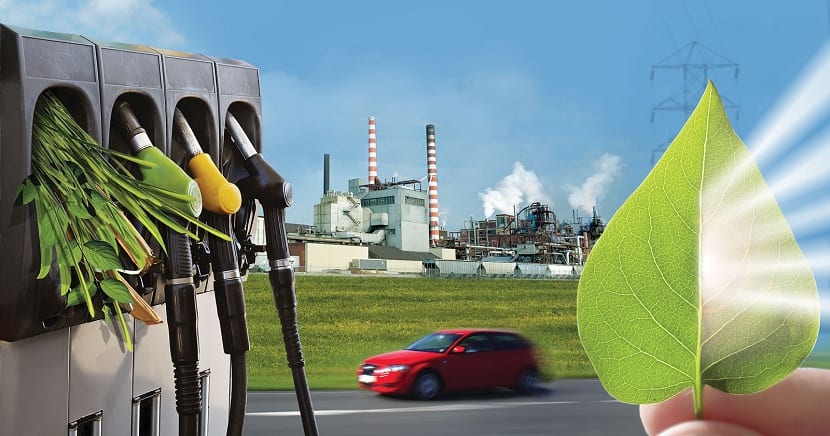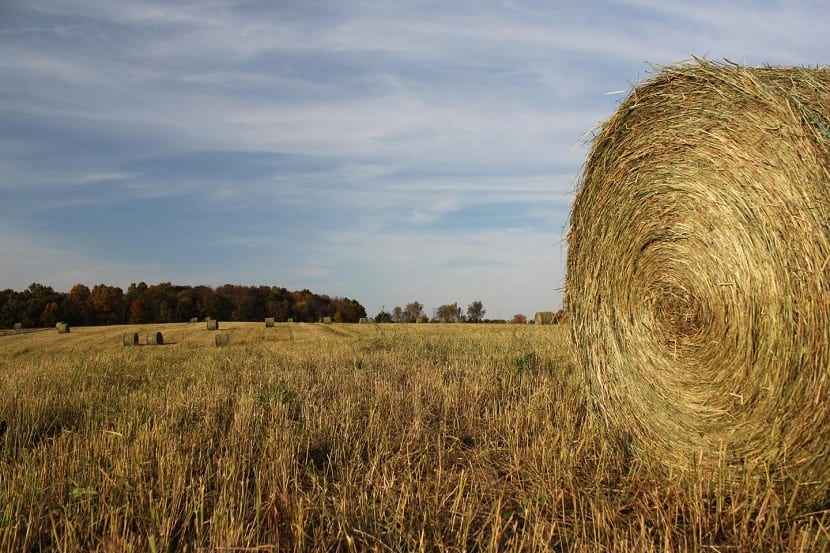
There are different types of biofuels that come from raw material that can be regenerated. Today we are going to talk about cellulosic biofuels. This type of fuel comes from fast-growing agricultural residues, wood and grasses that can be transformed into a variety of biofuels including jet fuels.
In this article we are going to describe what cellulosic biofuels are and what characteristics they have.
What are cellulosic biofuels

For today's society it should be clear that we have to get out of the oil sphere. Dependence on this fossil fuel poses intolerable risks to national, economic or environmental security. However, the current economic model does not stop the use of these Fossil fuels. In order to find new sources of renewable energy, it is necessary to discover a new agent capable of propelling the world fleet of vehicles, since this is the main source of greenhouse gas emissions into the atmosphere.
You can practically distill biofuels from anything that is or has ever been vegetable. Those of the first generation come from edible biomass, mainly corn and soybeans, sugar cane and beets, among others. They are the fruits most at hand in a forest of potential biofuels since the necessary technique that is needed to extract them predominates.
It has to be said that these biofuels are not a durable solution over time. An existing arable land is necessary and only biofuels could be produced to cover 10% of all liquid fuel needs of the most developed countries. By demanding larger harvests, livestock feed becomes more expensive and on the prices of some groceries, although not as much or as the press would have you believe a few years ago. Once the total emissions contained in the first generation biofuels are accounted for, it is not as beneficial for the environment as we would like it to be.
Greenhouse gas emissions balance

This drawback in the balance of greenhouse gases into the atmosphere between absorption and generation can be alleviated with the use of second-generation biofuels that are derived from cellulosic materials. These cellulosic materials are: wood residues such as sawdust and construction residues, agricultural such as corn stalks and wheat straws. We also find energy crops, that is, plants that have a rapid growth and have material in gas or specifically sown for the production of biofuels.
The main advantage that these energy crops have is that they cost few during their production. Only abundant and do not affect food production, which is of vital importance to take into account. Most energy crops can be grown on marginal land that is not used for farming. Some of these short-rotation renewable willow crops can decontaminate the soil as they grow.
Production of cellulosic biofuels

Huge amounts of biomass can be harvested sustainably for fuel production. There are some studies that affirm that, at least, in the United States, at least 1.200 million tons of dry cellulosic biomass can be produced per year without this reducing the biomass available for human consumption, livestock and exports. With this more than 400.000 million liters of biofuels could be obtained per year. This amount is equivalent to half of the current annual consumption of gasoline and diesel in the United States.
This generated biomass can be converted into any type of biofuel: ethanol, ordinary gasoline, diesel and even jet fuel. Fermented corn kernels are much easier to break down than donated cellulose stalks, but much progress has been made lately. Chemical engineers have powerful quantum chemical computer models available to build structures capable of controlling reactions at the atomic level. These investigations are intended to soon extend conversion techniques to the refinery arena. The era of cellulosic fuel is now within our grasp.
After all, the natural purpose of cellulose is to form the structure of a plant. This structure consists of rigid scaffolds of locked molecules that support vertical growth that tenaciously resist biological decay. In order to release the energy that cellulose contains to untangle the molecular knot created by evolution.
Power generation process through cellulosic biomass
The process begins by breaking down solid biomass into smaller molecules. These molecules are further refined to have fuels. The methods are usually classified by temperature. We have the following methods:
- The low temperature method: This method works with temperatures between 50 and 200 degrees and produces sugars capable of fermenting into ethanol and other fuels. This occurs in much the same way as the current treatment used in corn and sugar cane crops.
- The high temperature method: This method works at temperatures between 300 and 600 degrees and a bio-oil is obtained that can be refined to produce gasoline or diesel.
- The very high temperature method: This method works at temperatures above 700 degrees. In this operation a gas is generated that can be transformed into liquid fuel.
For now, it is not known which is the method that will convert the maximum amount of stored energy from liquid fuel at the lowest possible cost. Different paths may have to be followed for different cellulosic biomass materials. Treatment to high temperatures might be optimal for woods, while low temperatures would be best for grasses. It all depends on the amount of material that must be reduced in order to generate the biofuel.
In summary, cellulose is made up of carbon, oxygen, and hydrogen atoms. Gasoline, for its part, is made up of carbon and hydrogen. The conversion of cellulose into biofuels consists, then, in eliminating the oxygen from the cellulose to obtain molecules of high energy density that only contain carbon and hydrogen.
I hope that with this information you can learn more about cellulosic biofuels.